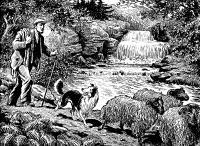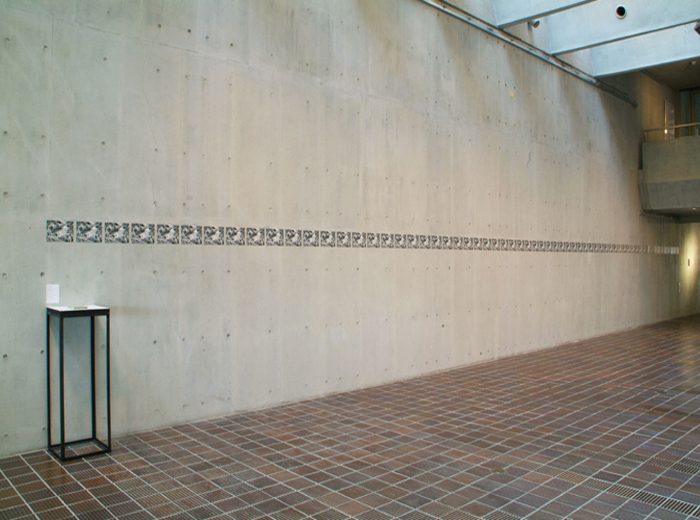Compiled for the event ‘All or nothing? A consideration of blank books’ at the Henry Moore Institute, Leeds, 25th June 2005.
“Black Bob has its title printed onto the boards of the front cover, and printed in reverse on the back boards.
Within, each printed endpaper repeats exactly, making the book two sequences running in opposite directions:
63 black-and-white images of three blackface sheep before a mountain stream move from back to front, and
63 images of Black Bob and his bearded shepherd on a stream’s verge move from front to back. Each spread
is ‘identical’; the halved images join in transit to show a coherent, static, image assembled from two separate,
contradictory flows.”
Harry Gilonis: ‘How to Read II’, Certain Trees: The Constructed Book, Poem and Object 1964–2006,
Saint-Yrieix-La-Perche, 2006

124pp, 174 x 115mm, letterpress, paper-covered casebinding. Edition of 100 copies. Coracle, London 1989
Second edition of 200 copies. Coracle, Ireland 2008

1—The minimalist ‘blank’ book is paradoxically re-deployed, the commandeered subject matter repeated
throughout and the black impression of letterpress line-block roughly balanced with unprinted white stock…

2—From the first to the last picture there is no change, but further pictures preceding and following the
sixty-three in the book might show both a start and a finish, the published fraction just a moment
somewhere within a moving sequence…

3—This demonstration of direction, the page after page rightward movement of shepherd, dog, sheep, and
the parallel flow of the river, is identical to the narrative of a book with blank stock as its subject…

4—The completely white book, the coloured or black book, both silent and unillustrated, such ‘self-coloured’
content intends not the small-scale reading of words, sentences and pages but a large-scale reading…

5—it doesn’t dictate a pace. That’s a curious thing about it and why I’m pleased with it. It has all sorts of
paces. It’s absolutely static. I don’t know if the front’s moving towards the back or vice-versa…

6—We first meet the shepherd with his collie and flock of black-faced sheep by the stream—water cascading
down rocky ledges—on the inside front cover and endpaper. The same picture—traditional black and white—
in place of a title page…

7—turning the pages the image remains perfect, and, moving forward or backward, perfectly still. This is no
flipbook. The back cover mirrors the front—reversing all words, BOB, of course, faithfully remaining BOB…

8—like a stuck record Black Bob ends where it begins…

References: 1 to 5—Colin Sackett, 5—from an interview with Cathy Courtney for ‘Art Monthly’ 184, March
1995; 6, 7—John Janssen, in ‘The Space of the Page’, Henry Moore Institute, Leeds, 1997; 8—Les Coleman,
June 2005.
Black Bob
Part of ‘Equivalent Spaces’ at
Aichi Prefectural University of
Fine Arts and Music Museum,
Japan, 2008

